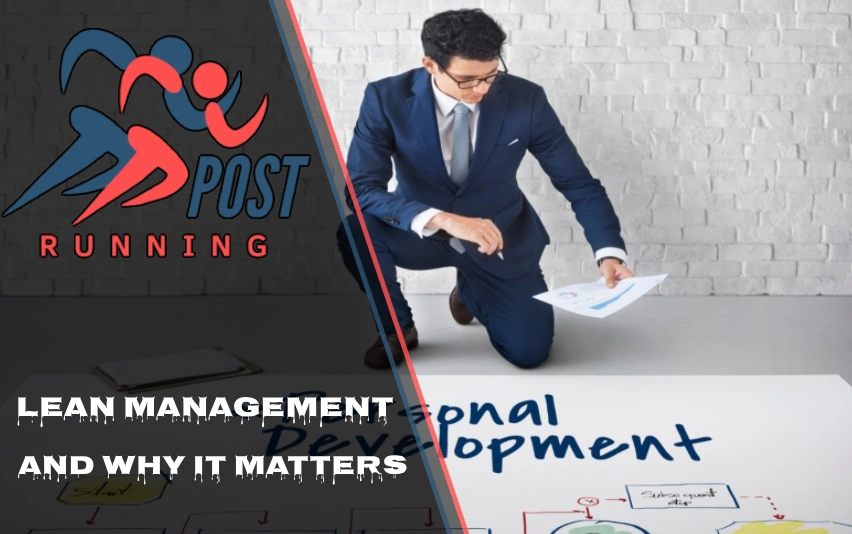Lean Management is a powerful approach that’s revolutionizing how organizations operate. But what is Lean Management and why it matters in today’s fast-paced business world? Let’s dive into this innovative methodology that’s helping companies streamline their processes, boost efficiency, and deliver more value to customers.
Introduction
In a world where businesses are constantly looking for ways to improve, Lean Management stands out as a beacon of efficiency and continuous improvement. This approach, which originated from the Toyota Production System in the late 1940s, has since spread its wings far beyond the automotive industry. Today, it’s a go-to strategy for organizations across various sectors, from manufacturing to healthcare and even software development.
But what makes Lean Management so special? At its core, it’s all about doing more with less – maximizing value while minimizing waste. It’s a philosophy that encourages organizations to take a hard look at their processes, identify areas of inefficiency, and continuously work towards improvement. Let’s explore what Lean Management is all about and why it matters so much in today’s competitive business landscape.
What is Lean Management?
Lean Management is like a fitness program for your business. Just as you’d trim the fat and build muscle to get in shape, Lean Management helps organizations cut out wasteful practices and strengthen their core processes. It’s all about creating a lean, mean, value-delivering machine.
At its heart, Lean Management focuses on two key aspects:
- Maximizing customer value
- Minimizing waste
But it’s not just about cutting costs. Lean Management involves a thorough examination of business processes to identify and eliminate activities that don’t add value. The goal? To create a smooth, efficient workflow that’s perfectly aligned with customer demands.
Imagine a river flowing smoothly without any obstacles. That’s what Lean Management aims to achieve in your business processes. It removes the rocks and debris (non-value-adding activities) that slow down the flow, allowing resources to be used more effectively and improving overall quality.
Core Principles of Lean Management
Lean Management isn’t just a set of tools or techniques; it’s a way of thinking. It’s built on five core principles that guide organizations towards continuous improvement:
- Identify value from the customer’s perspective: This is the starting point. What does the customer actually want and need? What are they willing to pay for? Understanding this helps focus efforts on what truly matters.
- Map the value stream: This involves looking at the entire process from start to finish. It’s like creating a roadmap of your business, identifying each step in delivering value to the customer.
- Create continuous flow: Once you’ve mapped out the value stream, the goal is to make it as smooth as possible. Remove bottlenecks and reduce waiting times between steps.
- Establish a pull system: Instead of pushing products or services onto customers, let customer demand pull them through the system. This helps prevent overproduction and reduces waste.
- Pursue continuous improvement: Also known as “Kaizen” in Japanese, this principle encourages constant, incremental improvements. It’s about never being satisfied with the status quo and always looking for ways to do better.
These principles work together to create a system that’s responsive, efficient, and focused on delivering maximum value to customers.
Benefits of Lean Management
Implementing Lean Management is like giving your organization a superpower. It comes with a host of benefits that can transform how your business operates:
- Improved productivity and efficiency: By eliminating waste and streamlining processes, Lean Management helps organizations do more with less.
- Better focus on value-adding activities: With non-value-adding activities out of the way, teams can concentrate on what really matters to customers.
- Maximized resource utilization: Lean principles ensure that resources – whether it’s time, money, or manpower – are used in the most effective way possible.
- Enhanced employee motivation: Lean Management often involves empowering employees to identify and solve problems, leading to increased job satisfaction and engagement.
- Increased customer satisfaction: By focusing on what customers truly value, organizations can better meet and exceed customer expectations.
- Reduced lead times: Streamlined processes mean faster delivery of products or services to customers.
- Sustainable competitive advantage: The continuous improvement mindset of Lean Management helps organizations stay ahead of the competition in the long run.
These benefits aren’t just theoretical. Companies that have successfully implemented Lean Management have seen significant improvements in their performance, customer satisfaction, and bottom line.
Implementation of Lean Management
Implementing Lean Management isn’t like flipping a switch; it’s more like planting a garden. It takes time, effort, and nurturing to see results. Here’s how organizations typically go about implementing Lean Management:
- Defining value from the customer’s standpoint: This involves really getting to know your customers and understanding what they consider valuable. It might involve surveys, focus groups, or in-depth customer interviews.
- Eliminating waste in business processes: This step involves a thorough analysis of current processes to identify and eliminate any activities that don’t add value. It’s like decluttering your business.
- Creating a culture of continuous improvement: This is perhaps the most challenging part. It involves shifting the mindset of the entire organization towards always looking for ways to improve.
- Empowering employees to contribute to the improvement process: Lean Management recognizes that those closest to the work often have the best ideas for improvement. It’s about giving employees the tools and authority to make positive changes.
- Establishing a pull system based on customer demand: This involves aligning production or service delivery with actual customer demand, rather than forecasts or assumptions.
Remember, implementing Lean Management is a journey, not a destination. It requires ongoing commitment and effort to maintain and improve processes.
Challenges and Considerations
While Lean Management offers numerous benefits, it’s not without its challenges. Here are some key considerations:
- Requires a shift in organizational culture: Lean Management isn’t just about changing processes; it’s about changing mindsets. This can be challenging, especially in organizations with deeply ingrained ways of working.
- Demands commitment from all levels of the organization: For Lean Management to be successful, everyone from top executives to front-line workers needs to be on board.
- May face resistance to change: As with any significant change, there may be resistance from employees who are comfortable with the status quo.
- Requires ongoing effort to maintain and improve processes: Lean Management isn’t a one-time fix. It requires continuous effort to maintain improvements and find new ways to enhance efficiency.
These challenges shouldn’t discourage organizations from implementing Lean Management. Instead, they should be seen as part of the journey towards creating a more efficient, customer-focused organization.
Lean Management Across Industries
While Lean Management has its roots in manufacturing, its principles have proven to be remarkably adaptable. Today, you’ll find Lean principles at work in a wide range of industries:
- Healthcare: Lean principles are helping hospitals reduce wait times, improve patient care, and manage resources more effectively.
- Software development: The Agile methodology, which is widely used in software development, incorporates many Lean principles.
- Engineering: Lean principles help engineering firms streamline their design processes and reduce waste in project management.
- Service industries: From banks to restaurants, service industries are using Lean principles to improve customer experience and operational efficiency.
This wide applicability shows the versatility and power of Lean Management principles. No matter what industry you’re in, there’s likely a way to apply Lean thinking to improve your operations.
Conclusion
So, what is Lean Management and why it matters? At its core, Lean Management is about creating more value for customers while using fewer resources. It’s a powerful approach that can help organizations of all sizes and across all industries improve their efficiency, reduce waste, and become more competitive.
In today’s fast-paced, highly competitive business environment, the principles of Lean Management are more relevant than ever. By focusing on continuous improvement, eliminating waste, and aligning processes with customer value, organizations can not only survive but thrive in challenging times.
Remember, implementing Lean Management is a journey. It requires commitment, patience, and a willingness to challenge the status quo. But for organizations willing to make that commitment, the rewards can be significant – improved efficiency, higher customer satisfaction, and a stronger competitive position.
As we look to the future, it’s clear that the principles of Lean Management will continue to play a crucial role in shaping how organizations operate. Whether you’re running a small startup or a large corporation, understanding and applying Lean principles can help you build a more efficient, customer-focused, and successful organization.
Discover more fascinating insights—explore Running Posts today.















